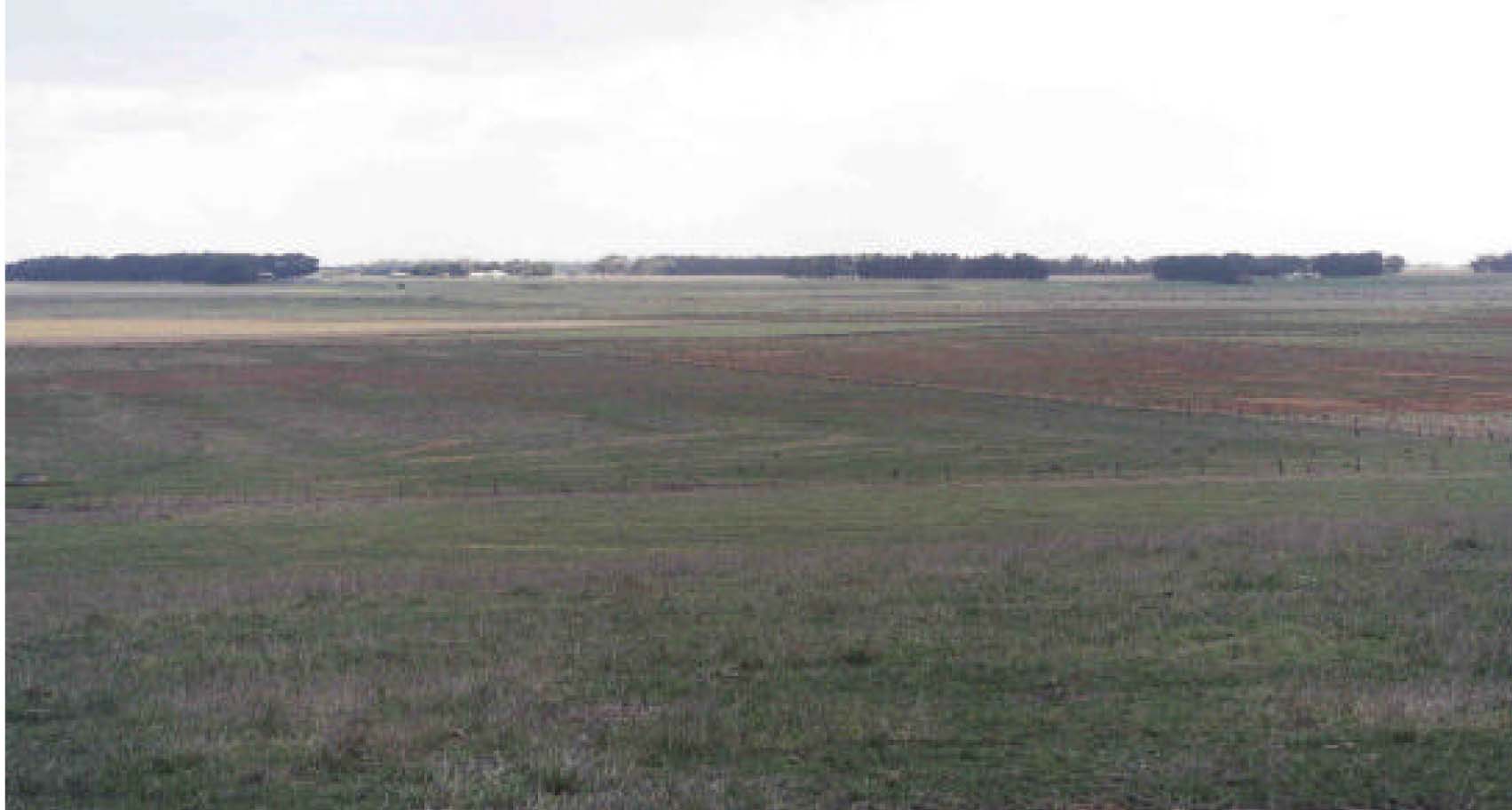Marl, Kororoit Marl, Mepunga Marl Land Unit
The Tertiary marl, part of the Heytesbury Group sediments, occurs mainly in the southern portion of the study area. The lithology of this land unit is predominantly unconsolidated greyish marl with variable amounts of calcareous clay, silt and clayey limestone. Thin beds of limestone are occasionally present at depth. The land unit consists of a variety of landforms ranging from level and gently undulating plains to dissected undulating rises and low hills. Due to the variability of lithologies and landform, the soils are variable although they typically have calcium carbonate present (usually at depth). A common toposequence consists of Petrocalcic Dermosols on the crests and upper slopes and Vertic Brown Chromosols on the lower slopes and depressions. The subsoils may also be sodic in some instances. Some areas have redeposited material formed by aeolian or colluvial processes which have formed Podosols on both high and low topographic positions.

Plate 39 Looking down on flats and dissections of basalt and marl near Bushfield.


